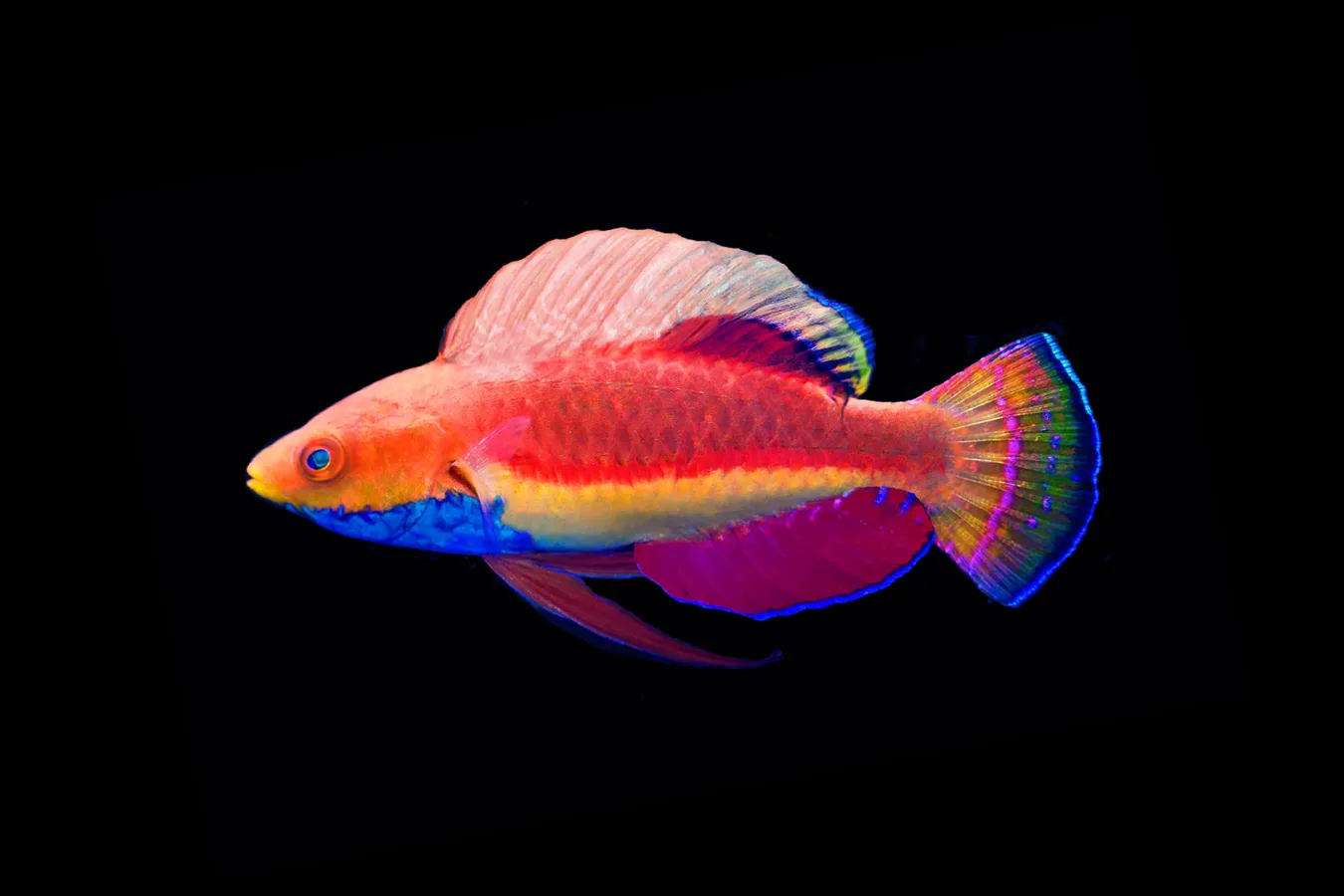Related products
Blue Throat Fairy Wrasse
Please Note: Due to variations within species, your item may not look identical to the image provided. Approximate size range may also vary between individual specimen.
Deep dive >
Quick Stats
- Dietry Requirements
- Compatible With
- Maximum Fish Size (cm)
- Minimum Tank Size (L)
- Same Species Aggression
- Other Species Aggression
- Care Requirements
The Blue Throat Fairy Wrasse is a peaceful wrasse andd a great addition to any reef aquarium adding stunning colouration. Like other Wrasse, the males during courtship will display increased colour intensity. Colours may vary depending on the fish’s mood.
The Blue Throat Fairy Wrasse is a very peaceful, active fish that will bring both colour and activity to a fish-only or reef aquarium of 250 litres or larger. They will not bother any corals or invertebrates making them a perfect fish for the reef aquarium. A single male can be kept with a group of females that is introduced prior to or at the same time as the male. These Wrasse like to jump, so a tight fitting canopy is recommended.
The Blue Throat Fairy Wrasse diet should include vitamin enriched frozen mysis and brine shrimp, and other meaty foods along with a high quality marine flake and pellet food. Wrasses are very active and should be fed several times a day.

